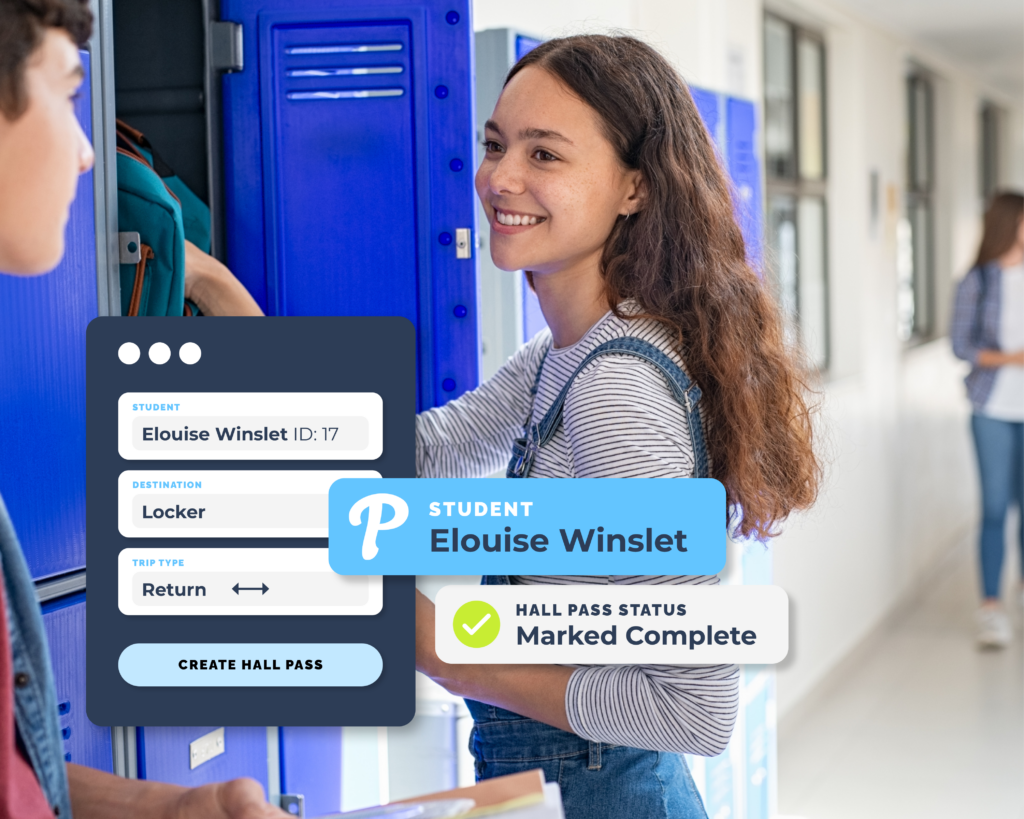Introduction
As the founder of an Ed-tech startup, I would like to share the insights I gained into the makings of a comprehensive School Safety Platform. I would like to keep it as actionable and succinct as possible. First, I would like to start with a look at some of the problems faced by schools on a daily basis creating major security challenges.
Well, you know how there’s a lot going on in every school at the end of the school day? When the dismissal bell rings, kids are running to carlines, school busses, traffic jams snaking around school neighborhoods, and pedestrians all over the place. What’s on the hearts and minds of us all is the safety of our children, but walkie-talkies, clipboards, bull-horns, and paper car-tags is not the best use of today’s technology. We burden our teachers with solving the problem every day without equipping them with the right tools and technology to handle it effectively. They are the heroes who manage to pull it off every day, be it sun, rain or snow!
If you think about it for a second, we have all the technology hardware at our schools. In addition, we are wired up with the best Internet available in our schools. Most of our parents also carry some of the best smartphones on the market. Yet, when it comes to the safety of our children, we rely on clipboard and walkie-talkies and a whole lot of guesswork. Would it not help to have a bird’s eye view of the entire dismissal process and automate and track every transaction with real-time alerts to parents when their child is safely on a bus or walks home?
Dismissal Automation is the first step towards a Comprehensive School Safety Platform
Let’s zoom out a bit and lay out the origins of the technology landscape when it all began.
Student Information Systems
Before we get into this relatively new concept of a School Safety Platform (SSP), let us now understand how the concept came to be. In the early days of computerization in K-12 in the 90s, there was a push to adopt an Enterprise Resource Planning (ERP) style system from the corporate world into the education space to manage student data more efficiently. These systems were called Student Information Systems(SIS. The advent of SIS was the first attempt to centralize and manage student data under one system. Gradually these SIS systems evolved to do a plethora of functions like student grading, attendance, enrolment, payments, tuition, and managing many other student-related data needs of a school.
As the SIS systems evolved over the past 2-3 decades, they have enhanced their functionality to include more aspects of the student lifecycle. Some SIS has also gone so far as to include some basics of a Learning Management System capabilities to be tabled as a blended solution. We are moving towards a more comprehensive and singular platform concept with Single sign-on capabilities across the entire education ecosystem.
Initially, SIS was primarily on-premise deployments with the schools or school districts hosting their data in-house. Increasingly the newer players along with legacy providers are moving to the cloud using a SAAS model. The older SIS systems worked in silos and often had closed architecture with very minimal integration with third-party vendors. But this is changing rapidly with open APIs, 2-way data transfer and integration capabilities.
Learning Management Systems

However, an SIS should not be confused with a Learning Management System(LMS) which came in later to do the heavy lifting on the content and curriculum side of the equation. An LMS is primarily designed to deliver educational courses or training material. It is also used to administer tests, assignments, grading, and scoring of students to track student progress. It thereafter, syndicated this data to relevant stakeholders within the education ecosystem. LMS was born out of necessity in the distance learning space.
It was used to manage, regulate and monitor the delivery of content and also benchmark student performance to address compliance. Eventually, we saw different variants of LMS being adopted in all aspects of the education space including K-12.
For their part, the LMS players have also gradually increased their product scope to include some elements of an SIS system to position themselves as a replacement solution for a traditional SIS in the education landscape.
Market size & Conditions
The global SIS market is expected to nearly double, and reach a value of $4.02 billion by 2019. The K-12 segment of the market is predicted to grow at a compounded annual growth rate of 17.37%. From 2016-2019, it more than doubled to $1.57 billion. There is a steady growth of primary education in emerging regions. It is increasing the adoption of e-learning methods and has inspired providers to increase their presence in the K-12.
The Learning Management System (LMS) market size is expected to grow from $5.22 Billion in 2016 to $15.72 Billion by 2021, at a compound annual growth rate of 24.7%. Increasing adoption of digital learning among corporate organizations and academic institutes, Bring Your Own Device (BYOD) trend, growing usage of wearable e-learning devices, and emerging technologies such as gamification and virtual reality are some of the major driving factors for the LMS market.
Evolution of a School Safety Platform
With the parallel growth of LMS and SIS over the years, conspicuous by its absence was a comprehensive platform to address all aspects of safety in a school system. With evolving threat perceptions around soft targets, there is an increasing demand for innovative solutions to ensure safety at schools and colleges. Yesterday’s safety tools and physical barriers are no longer relevant or sufficient for today situations. School districts are now held liable for students during the arrival and dismissal processes.
Increased scrutiny is being placed not only during the aftermath of an emergency situation to analyze the reaction of school staff to prevent future tragedies, but greater emphasis is being placed on how the schools and its staff are prepared for any emergencies. Do they have the right tools and training? Are the protocols clearly laid out and rehearsed in every eventuality? Do they have technologies in place which can automate and handle laid out tasks in a clear and concise manner when seconds matter?

As we all know the most critical time in an emergency is how the staff handles the first few minutes. Relevant Data & Communication channel in the right context can be critical in those first few minutes. Everything starts with having a School Safety Platform which handles all these elements automatically, with established communication channels, real-time and relevant data access with tools such as an electronic ‘Panic Button’, Digital dismissal management system, Visitor management and tracking system, etc. As they say “We do not choose the tragedy, but we can choose the response”
Dismissal Automation came first
At PikMyKid we first pioneered the concept of Dismissal Automation which handles all aspects of daily dismissal with a potential safety risk. Dismissal time in any school is known to have the greatest flux. There is a lot going on during that time putting great stress on the school’s otherwise systemized approach. Some examples of the scope of activities happening in every school within the dismissal timeframe are:
- Hundreds of cars converging on the school campus and choking all access points.
- Parents parking on every available space and walking up to the school entrance.
- After school service providers converging on the school campus.
- Students biking, walking, dispersing through traffic.
- Parents walking up to the school reception for future absentee notices, change pick up modes, delegation instruction for pick-ups, etc.
- Authentication of pick up parent, carpools, nanny, neighbor, etc rests with teachers on carline duty.
- School busses, after-school club vans, YMCA pick-ups congregating at the school jostling for space.

Now, imagine having a bird’s eye view of these variables in an actionable dashboard format for the teachers and Principal with no surprises. The importance of having a structured dismissal protocol cannot be overemphasized. This also creates digital time stamps and audit trails which helps analyze and remedy problems before they become significant. PikMyKid does precisely that. Every car within a geo-fence around the school is tracked. All transactions are recorded and time-stamped for audit. Even the delegations or pick up changes are pre-approved and authenticated. Teachers finally have the tools to manage the dismissal more efficiently without guesswork.
The transition from Dismissal System to a Comprehensive School Safety Platform
After handling the dismissal process for a few years, schools wanted more and thus PikMyKid enhanced their scope to become a comprehensive safety platform. The key to this evolution was based on one key factor- Parent Adoption.
As the dismissal system started getting more efficient. It cut dismissal times and increased safety. The system also sent real-time push notification to parents on the child’s dismissal status. Consequently, PikMyKid’s adoption among parent community surged. With over 80% of parent adoption in most schools, with very high-end user engagement on a daily basis, schools finally had at their disposal a very valuable platform to engage their parents effectively.
Parent Data Currency & Accuracy
Schools traditionally had about 80-85% accurate parent data at the beginning of every year just after enrolment. From that point on that data constantly degraded for the rest of the school year. By the end of the school year, in some cases, the data was less than 50% accurate. With PikMyKid’s implementation, the SIS’s parent data is brought up to near 100% accuracy. This consequently helps data accuracy to be maintained for the rest of the year. Due to high-end user engagement on the platform, changes to parent contact information is handled correctly by PikMyKid.
Schools have consistently found that using PikMyKid as the primary platform for communication has better message deliverability and engagement due to a more accurate data set. Schools are also able to deliver their messages through a push notification on the phone application.
“Panic Button” Feature for emergencies

With the entire school staff live on the PikMyKid platform, schools wanted to leverage the adoption to handle emergency situations more effectively. ‘Panic Button’ feature was introduced to enable any staff at the school with the ability to raise an alarm with a simple push of a button on any device. Automatically pre-configured protocols are set in motion. This includes real-time location tracking of the individual triggering the alert. The entire school staff and first responders pre-configured as recipients would receive instant alarms.
Comprehensive School Safety Platform
The relevance and necessity of a school safety platform in today’s school setting cannot be overemphasized. Tapping into the SIS database for initial set up, an SSP would be handling all aspects of school’s safety. It includes Visitor management, Field trip management, Daily dismissals, School bus tracking, Emergency Alerts, and Real-time push notifications to parents.

There are currently no other systems in the market which handle all these aspects of school safety comprehensively. PikMyKid is rapidly evolving to fill in this void in the K-12 space. Who will the market leader in this fast-emerging space? Only time will tell. It is a foregone conclusion that the need for a Comprehensive School Safety Platform has never been greater.


